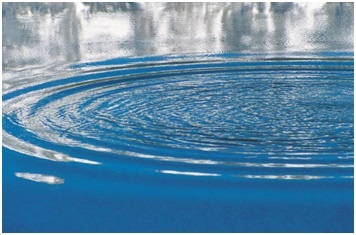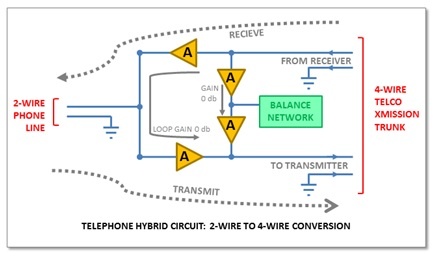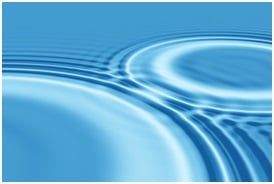Today’s post takes a look at what causes echo sounds on calls.
 Nearly all of us have occasionally been on cellphone, VoIP, or satellite calls and experienced the annoyance of an echo on the line.
While we may joke that some people love to hear themselves talk, few of them enjoy hearing an echo in their ear. Today, we take a brief look at echoes and examine their causes.
Nearly all of us have occasionally been on cellphone, VoIP, or satellite calls and experienced the annoyance of an echo on the line.
While we may joke that some people love to hear themselves talk, few of them enjoy hearing an echo in their ear. Today, we take a brief look at echoes and examine their causes.
There are two primary sources of echo and one primary reason that we occasionally get a “bad connection” with that annoying echo effect.
When you yell into some canyons, after some delay, you can hear your voice echoed back to you at a lesser volume. This is caused by the energy of the soundwaves bouncing off of the canyon walls and returning to your ear, instead of the energy being dispersed or continuing away from you. If you throw a rock into the center of a huge pond, the ripples might disappear by the time they reach the shore, but in a small pool, the energy in the ripples hit the sides of the pool, and can be seen as smaller waves heading back to the source, after a delay.
Acoustic ECHO & Screeeeeeeeeeeeee-FEEDBACK
 Whenever we pair up a speaker and a microphone, we will get some level of acoustic echo. The microphone can “hear” and will pick up some of what is coming out of the speaker when the speaker sounds in the room. At its extreme, this generates the horrible screeeeeeching noise, known as feedback (and people frantically yelling at you to press mute, or to move the microphone away from the karaoke loudspeakers). At lesser levels, this effect is known as acoustic echo.
Whenever we pair up a speaker and a microphone, we will get some level of acoustic echo. The microphone can “hear” and will pick up some of what is coming out of the speaker when the speaker sounds in the room. At its extreme, this generates the horrible screeeeeeching noise, known as feedback (and people frantically yelling at you to press mute, or to move the microphone away from the karaoke loudspeakers). At lesser levels, this effect is known as acoustic echo.
The echo’s delay comes from the round-trip time it takes for the sound to play at the far end, and the microphone there to send what it hears back to your ear. The quietness (reduced loudness) of the echo is due to the less than full percentage of the original sound that was picked up by the microphones and what percentage of that signal was lost in transmission (dB, or Energy Loss).
Hybrid ECHO (This is Not a Car Thing)
 The other major source of echoing comes from something called a “Telephone Hybrid.” Traditional telephone company switching equipment, (much like data networking) uses four-wires: two wires for transmit, and two wires for receive. In older analog networks, this made it easier for repeaters and other signal transmission technology to work. Analog telephones, for the most part, use two wires, combining both the transmit and receive onto a single pair of wires (and saving us from needing to double the number of wire hung on poles to buildings all around town).
The other major source of echoing comes from something called a “Telephone Hybrid.” Traditional telephone company switching equipment, (much like data networking) uses four-wires: two wires for transmit, and two wires for receive. In older analog networks, this made it easier for repeaters and other signal transmission technology to work. Analog telephones, for the most part, use two wires, combining both the transmit and receive onto a single pair of wires (and saving us from needing to double the number of wire hung on poles to buildings all around town).
A Telephone Hybrid was the device that converted a 4-wire telephone transmission trunk inside the phone company, to a 2-wire “subscriber” line that had a phone at the other end. Part of this conversion process reflects some of the energy each way, resulting in “Hybrid Echo,” especially from the far end of a circuit. Today, even modern fiber optic transmission lines use separate channels for transmit and receive and telephones still mimic two-wire circuits.
The Unsung Heroes: Echo Suppression & Cancellation
 So now that we know what causes echo, why is it that we don’t go mad hearing echo all of the time? For that, you can thank a number of telephone engineers who invented echo suppression and cancellation. (In the earliest days, echo wasn’t a huge problem – if you had to shout into the phone for one side to hear you, you weren’t likely to hear the echo coming back. As transmissions got better, echoing was suddenly very noticeable.)
So now that we know what causes echo, why is it that we don’t go mad hearing echo all of the time? For that, you can thank a number of telephone engineers who invented echo suppression and cancellation. (In the earliest days, echo wasn’t a huge problem – if you had to shout into the phone for one side to hear you, you weren’t likely to hear the echo coming back. As transmissions got better, echoing was suddenly very noticeable.)
One of these clever engineers noticed that on most (polite) phone calls, usually only one side was talking. Early echo suppression would simply detect which side was talking (or yelling the loudest), and cut off the other side. This suppression technique was also used in half-duplex speakerphones. It also led to many a shouting-contest, as one side tried to make themselves heard enough to interrupt!
Advances in electronics, along with the invention of DSP chips has enabled the creation of echo cancellation circuits. These circuits keep a short copy of the sound waves going out (say, 1.5 seconds) and look for the same signal coming back (the echo). Once the echo is spotted, the echo canceller performs some complex high-speed math that “subtracts” the echo before the sound is played back into your annoyed ear.
When Things Go WRONG, Wrong, wrong…
So with all of these echo cancellers, why do we still sometimes hear echo and why does it occur frequently on Cellular, Sattelite, and VoIP calls? The answer lies in transmission delay. For VoIP and Cellular calls, there is an extra delay caused by sampling and converting your voice to a digital signal (and back to an analog soundwave). For Satellite calls that bounce off of a single satellite, your voice has to travel 22,223 miles (35,786 km) AND BACK. Even at the speed of light, this adds delay to your call. When the round-trip transmission delay on your phone call exceeds the length of time the echo canceler looks for an echo signal coming back, the echo is NOT cancelled out, and you get very annoyed. This is as if you shouted into the canyon and only listened for one second for an echo, completely missing the echo that came back after two seconds.
So now you know! If your Cellular or VoIP callers are complaining of hearing echoes on their lines, you know that this is caused by NETWORK (and other forms) of DELAY that can overwhelm your echo cancellation. PathSolutions tracks down these sorts of problems by measuring delays across your network. It may be that an echoing call passed through several impaired links, or individual links, are fast enough, but not when added together. Unlike other solutions that simply indicate that a call sounded bad, PathSolutions can track the problem down to the link (or links) that are causing the delays (and echo).
See also: Intro to Voice Quality Jitter







